STAR WARS: RETURN OF THE JEDI (1983)
After rescuing Han Solo, the Rebels attempt to destroy the second Death Star, while Luke struggles to bring Darth Vader back from the dark side.
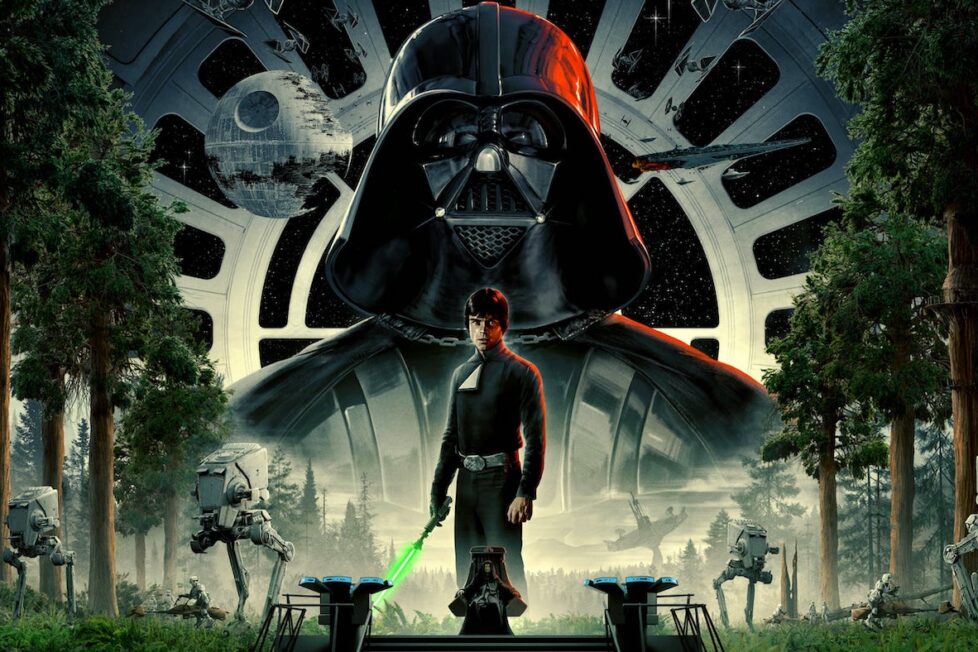
After rescuing Han Solo, the Rebels attempt to destroy the second Death Star, while Luke struggles to bring Darth Vader back from the dark side.


When Star Wars (1977) exploded into cinemas like a supernova, George Lucas’ space opera became a cultural phenomenon. With its roots in Akira Kurosawa’s The Hidden Fortress (1958) and John Ford’s The Searchers (1956), it opened the eyes of a generation and became a major part of popular culture. The sequel, Empire Strikes Back (1980), deviated from its wildly popular predecessor in style and tone but is considered the best entry in the long-running series for enriching the mythology and ending on a tantalising cliffhanger. 1980s audiences couldn’t wait to see how Lucas concluded his groundbreaking saga with Return of the Jedi, and while Lucas and Lawrence Kasdan’s screenplay never reaches the heights of Empire, Return of the Jedi delivered a satisfying conclusion.
Taking place a year after Han Solo’s (Harrison Ford) capture, C-3PO (Anthony Daniels) and R2-D2 (Kenny Baker) enter Jabba the Hutt’s palace on Tatooine. They’re sent as a trade bargain made by Luke Skywalker (Mark Hamill) to rescue Han, but after this plan fails Princess Leia (Carrie Fisher) infiltrates the palace disguised as a bounty hunter and tries to rescue Han by pretending to have captured Chewbacca (Peter Mayhew). But after being caught and enslaved by Jabba herself, Luke soon arrives to rescue his friends and meet the Rebel Alliance at a rendezvous point. Meanwhile, the Rebel Alliance gains new information that the Galactic Empire has started construction on a second Death Star. This new addition to the Empire’s forces is led by the mysterious Emperor (Ian McDiarmid), and as the Rebel fleet prepares for a massive attack on the space station, Luke must finally confront his father, Darth Vader (David Prowse).
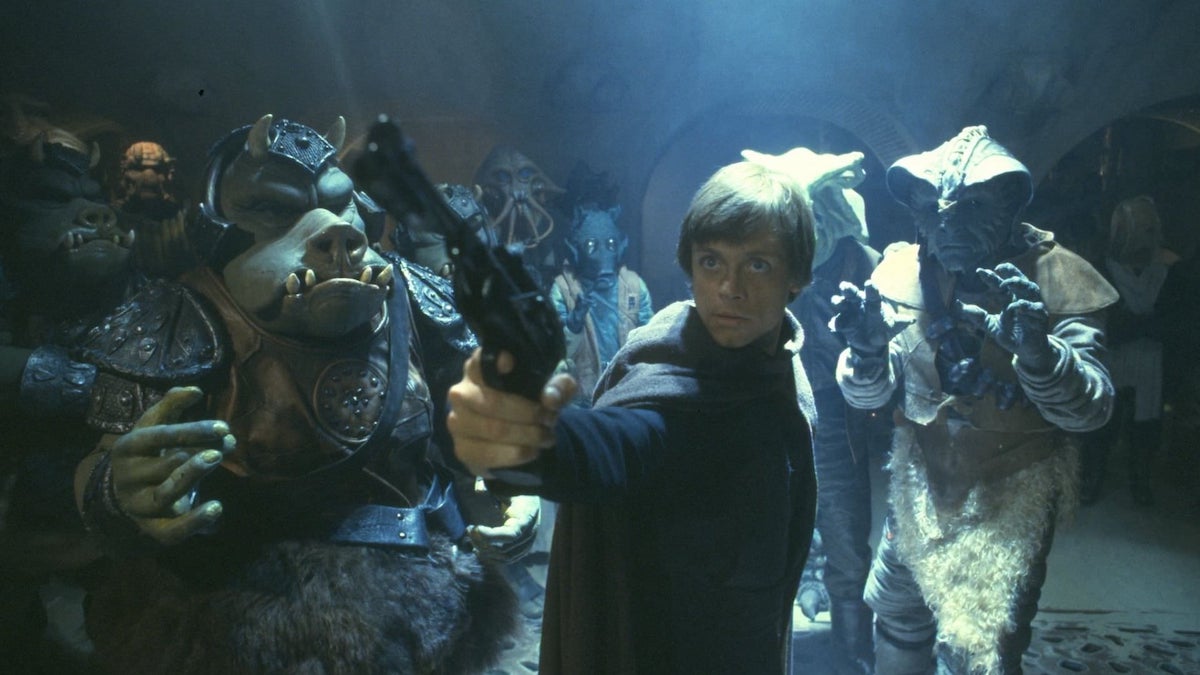
All of the original cast inhabit their characters with ease while demonstrating their own personal growth. Hamill’s performance as Luke Skywalker is more accomplished and proficient as he evolves into the most important figure in the galaxy. When audiences were first introduced to Luke, he was just a young and naive farm boy dreaming of adventure. A classic tableau from A New Hope captures him looking out at the horizon of Tatooine, dreaming of an escape. Luke since underwent enormous character growth and Return of the Jedi finally ends Luke’s development into a Jedi Knight. He’s no longer travelling to Tasche Station for power converters, he’s matured into the warrior Obi-Wan Kenobi (Alec Guinness) had once envisioned, as behind his black robes and calm demeanour he showcases some amazing lightsaber skills and mastery of the Force. Hamill successfully portrays Luke’s frustration empathetically while displaying genuine pain and emotional turmoil when required.
Although Luke is the lead protagonist, he’s by no means the main character. Return of the Jedi splits our heroes into parallel narratives, allowing everyone to develop. Carrie Fisher and Harrison Ford (Blade Runner) are both fantastic as the iconic duo Princess Leia and Han Solo. The moments of playfulness between the pair imbue their scenes with natural chemistry, creating a sense of authenticity. Unfortunately, following Ford’s reemergence from the frozen carbonite, his charismatic personality seems to be suffering from hibernation sickness. Solo’s flaws and imperfections are what made him such an endearing and relatable character. Ever since his introduction in A New Hope, the smuggler instantly became a fan favourite. However, due to Lucas’ constant screenplay revisions, it was never certain he would reprise the role a third time. The uncertainty of Ford coming back was the narrative reason for the unsettling twist of The Empire Strikes Back. Ford did eventually return in Return of the Jedi, of course, but the character lost his roguish nature. This may have been the character arc Lucas intended but the character ultimately suffers for it.
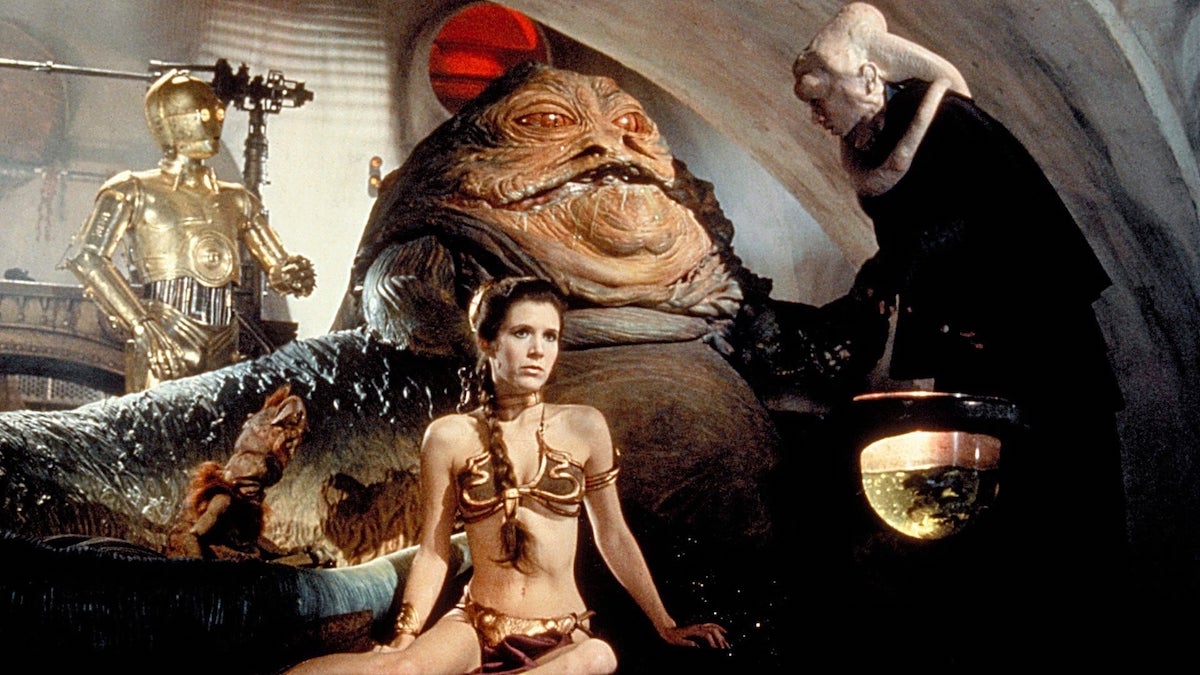
Star Wars villains have left an indelible impact on cinema history. After being introduced as the embodiment of pure villainy in A New Hope, Darth Vader here has a softer temperament due to the shocking revelation about his paternal relationship with Luke at the end of Empire. Regardless of this, David Prowse’s (Jabberwocky) intimidating physique remains menacing and James Earl Jones’ deep vocals still chilling. Although Vader appeared to be the biggest threat in the galaxy, the true mastermind behind the construction of the newly operational Death Star is revealed to instead be the formidable Emperor Palpatine. The villain’s introduction in The Empire Strikes Back piqued everyone’s curiosity, but it’s in Return of the Jedi that Palpatine became a fully-formed character. Fuelled by arrogance, Palpatine wants to destroy the Rebel Alliance and rule the galaxy, and he’s wonderfully portrayed by Ian McDiarmid, who excels at personifying the Emperor’s corruption and malevolence. He creates such an ominous ambience that his desire for violence and hatred carries a level of sinister unmatched in the franchise.
It’s a seemingly inarguable assertion among critics and fans alike that The Empire Strikes Back is the pinnacle of the series. That sequel’s darker tone and downbeat ending swallowed up the optimism like an ominous black hole. Since Irvin Kershner chose not to direct Return of the Jedi himself, Lucas conducted an extensive search for a director. Many filmmakers were reportedly considered including Steven Spielberg (Jaws), David Lynch (Dune), and David Cronenberg (Videodrome). However, following a dispute with the Directors Guild, Lucas eventually enlisted Richard Marquand (Eye of the Needle) to helm the project. Although he was inexperienced with special effects and none of his previous work seemed comparable to a big-budget space opera, he delivers a near-perfect conclusion to the saga. Marquant discarded the sombre tone of its predecessor for an episodic approach that combined concise storytelling, visual flourishes, and exciting thrills: from rescuing Han from incarceration in Jabba’s palace to a moving reunion with an ailing Yoda (Frank Oz), and onto a climactic space and forest battle. Admittedly, Return of the Jedi retreads familiar ground and the climaxes don’t reach the dazzling heights of its predecessors. However, Marquand’s direction deserves much credit for deftly balancing a triad of parallel storylines efficiently.
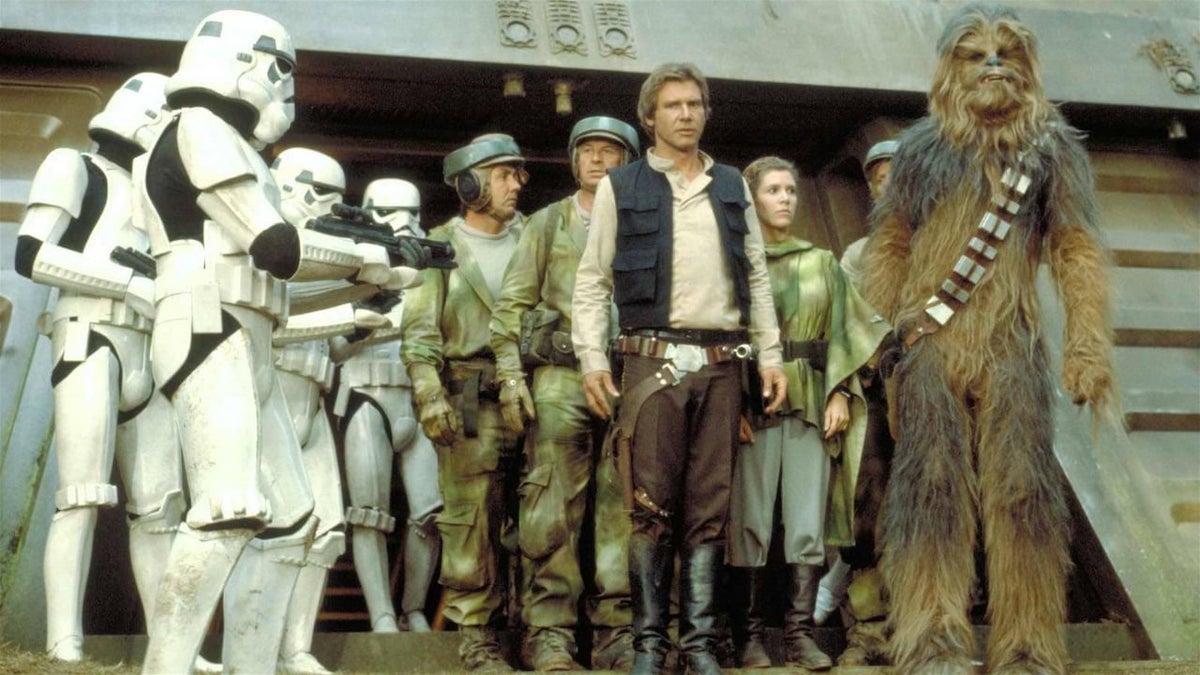
For all its faults, Return of the Jedi bears an emotional depth that’s unfairly dismissed. Interconnected throughout the battle between the virtuous Rebellion and the evil Empire are Lucas’ overarching themes of compassion and redemption. Return of the Jedi leans into the emotional depth only hinted at in The Empire Strikes Back, to explore the inner conflict of good and evil. The unexpected developments of the previous films lead to an emotional climax that combines and perfects all components of the series. During the final confrontation, Luke confronts both his father and Palpatine in an attempt to bring balance to the Force. After defeating Vader, Palpatine attacks Luke with a barrage of Force lightning… and as Vader watches his master torturing his son, he ultimately sacrifices himself to save Luke. Following this rousing sequence perhaps one of the most emotional moments of the entire series is when Vader finally succumbs to his wounds. After asking his son “Let me look on you with my own eyes”, the Sith Lord slowly fades away and Anakin Skywalker (Sebastian Shaw) returns for glorious redemption. The brief reunion between Anakin and Luke is a genuine moment of catharsis and pathos. It’s a satisfying conclusion to an engaging character arc that began in A New Hope, proving that even the most powerful Sith could find redemption.
Although contemporary audiences might lambast the limitations of the pre-digital era, the 1970s was an incredible period of imagination and technical virtuosity. Alongside Stanley Kubrick’s 2001: A Space Odyssey (1968), A New Hope advanced visual and practical effects into the brave new world of filmmaking. Lucas created Industrial Light and Magic (ILM) out of necessity to make his faraway galaxy feel realistic. Countless innovations and ingenious techniques generated the optical illusion of gargantuan starships and space battles. The methods that had been developed for A New Hope were perfected throughout the ’80s in classics like The Empire Strikes Back, Raiders of the Lost Ark (1981), and E.T. the Extra-Terrestrial (1982). Return of the Jedi benefits from the accumulated experience and ILM deliver some of the most kinetic and exhilarating action sequences in the entire franchise. The climactic Battle of Endor is an outstanding sequence that remains impressive because of the painstaking work that went into creating it. The camera seemingly captures individual starships being destroyed mid-manoeuvre as the Millennium Falcon guides a party of ships into the newly operational Death Star. Every vehicle is meticulously choreographed and photographed individually, whereas each laser blast was hand animated on top of the assembled composite. It’s an exciting climax and the multitude of effects still look phenomenal four decades later.
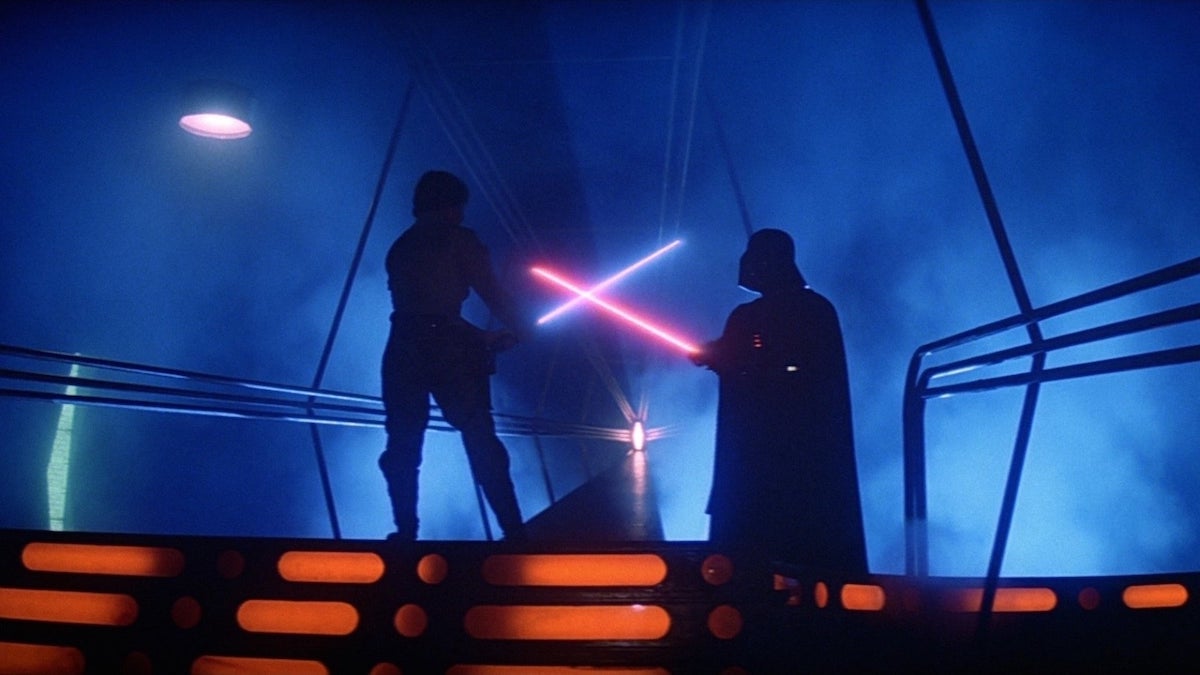
Star Wars is a rich and expansive universe filled with an abundance of unique characters. The meticulously detailed and beautifully realised worlds that Lucas brings to the screen will forever remain the most appealing aspect of this franchise. As demonstrated by the magnificent amount of material emitted throughout the saga, he’s a pioneer in world-building. A New Hope introduced a world with unique concepts such as the Force, lightsabers, and droids… The Empire Strikes Back expanded the Galaxy with new locations and characters like Lando Calrissian (Billy Dee Williams), Yoda, and Boba Fett (Jeremy Bulloch)… and Return of the Jedi continued to expand the universe of its predecessors by showcasing an endless array of fascinating characters. The long opening sequence in Tatoooine is a fantastic example of how wonderfully diverse Star Wars can be. There’s a plethora of colourful creatures including Salacious Crumb cackling in the corner to the ferocious Rancour locked in the dungeon.
Lucas was originally attached to Apocalypse Now (1979) before it was brought to the screen by director Francis Ford Coppola. While John Milius’ (Red Dawn) screenplay lingered in development limbo, Lucas’ attention was consumed with creating his own space opera. His early work on Apocalypse Now would eventually influence A New Hope. The Vietnamese withstanding the onslaught of the superior US forces served as inspiration for the Rebels fighting the Galactic Empire. During an interview, he said, “it was really about the Vietnam War. A large technological empire going after a small group of freedom fighters”. Although the more nuanced elements of The Empire Strikes Back overshadow the Vietnam subtexts underpinning A New Hope, the insurgent themes are reintroduced during Return of the Jedi. The Ewoks are an indigenous population responding to an imperial power encroaching on their home. The use of traps and snares recalls the portrayal of jungle warfare. Superficially they may appear like an unapologetic marketing tactic, but they are more complex than their appearance suggests. They allow Lucas to render controversial themes and ideas into seemingly inoffensive packaging.
Unfortunately, Lucas’ tendency to leave corners of the galaxy unexplored resulted in some questionable revisions in 1997’s Special Edition re-releases. The obtrusive CGI and additional material diminish the most powerful moments and break the narrative flow. Regardless, while many argue The Empire Strikes Back is the pinnacle of the Original Trilogy, Return of the Jedi still delivers a wonderful conclusion. The sweeping action and emotional moments provide exactly what a final instalment needs: closure. Equipped with a bigger budget and more advanced tools, Lucas effortlessly created a beautifully realised fantasy world replete with memorable characters and astounding visuals. It’s been four decades since its original release and the exhilarating story and thrilling climax will ignite childlike enthusiasm inside many of its audiences.
USA | 1983 | 131 MINUTES | 2:39:1 | COLOUR | ENGLISH

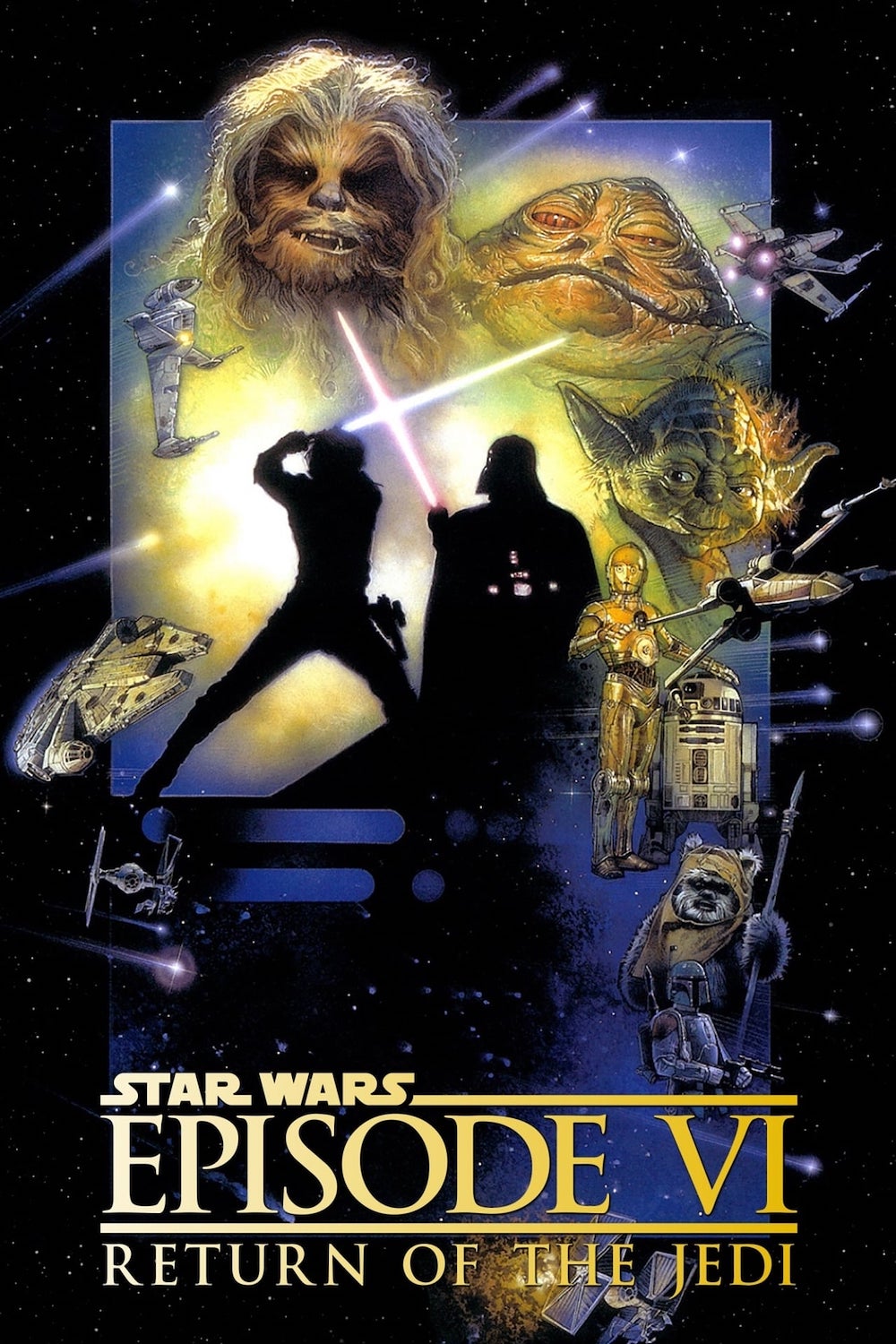
director: Richard Marquand.
writers: George Lucas & Lawrence Kasdan.
starring: Mark Hamill, Harrison Ford, Carrie Fisher, David Prowse, James Earl Jones & Ian McDiarmid.
